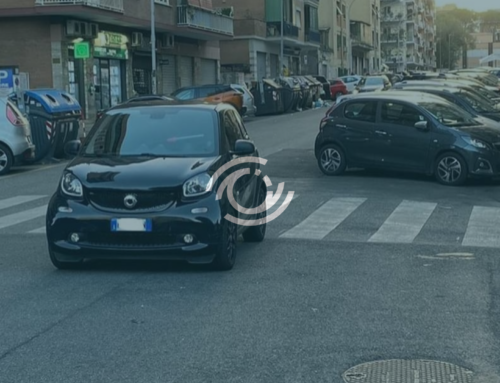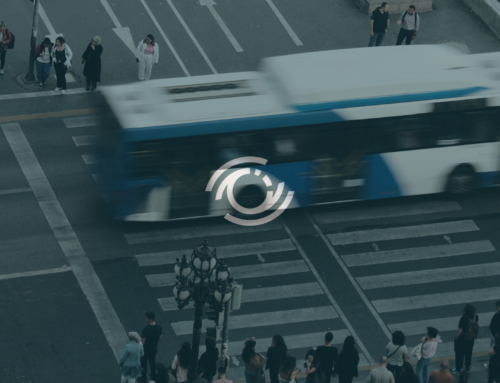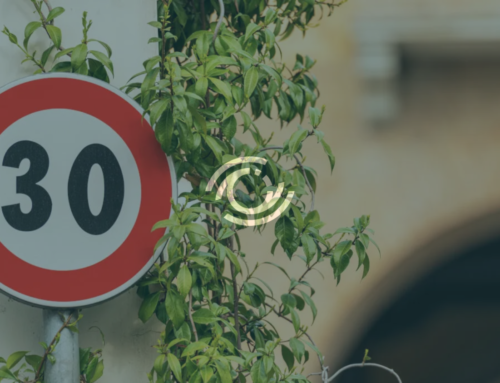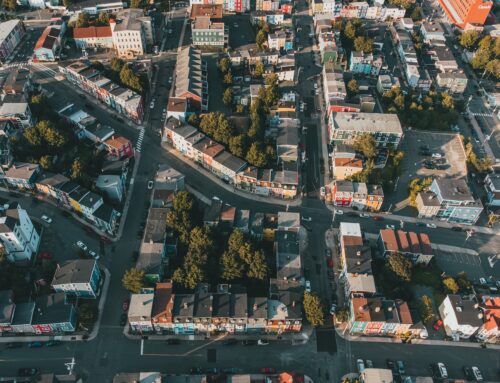Why is Copenhagen the safest city in the world? Here’s its virtuous project
In two years Copenhagen has gone from the eighth position to being the safest city in the world. How did it achieve this result?
Why is Copenhagen the safest city in the world? Here’s its virtuous project
In two years Copenhagen has gone from the eighth position to being the safest city in the world. How did it achieve this result?
In two years Copenhagen has gone from the eighth position to being the safest city in the world. How did it achieve this result?
The safest cities in the world
Feeling safe and comfortable in the places where we live is a need that cities must ensure.
The Economist Intelligence Unit ranks 60 global cities according to their level of security. This is calculated by considering 76 indicators in reference to environmental and digital security.
Then, what are the safest cities in the world?
According to its Safe Cities Index 2021 report, Scandinavian cities are in the top 10. Furthermore, Australia is present with two cities.
It should be pointed out that this latest ranking reports some surprising changes. We will now explain why.
Indeed, in the last editions, Tokyo, Singapore and Osaka have always been the three safest cities in the world. Now these, however, have other places in the ranking.
The city, in fact, that took the first position was Copenhagen, followed by Toronto.
This change reflects a rearrangement among cities that have always been near the top. Six cities – Amsterdam, Melbourne, Tokyo, Toronto, Singapore and Sydney – have always been in the top 10. Copenhagen was never included except in 2019, when it conquered the 8th place. [1]
The path Copenhagen has taken certainly deserves so much attention and is worth finding out.
Copenhagen not only the safest city, also the most digital one
In just two years, Copenhagen has climbed many positions by revolutionizing the ranking of the world’s safest cities. This shows how its program is well outlined and how its commitment is strong to achieve it. Therefore, what actions have been taken?
It was Copenhagen Mayor Lars Weiss himself who explained them. He outlined how the city has achieved security in the 6 aspects defined by report. We just have to find out.

|
Lord mayor Lars Weiss Source: Københavns Kommune |
Personal security
Denmark is a very liberal country. There are no distinctions between males, females, the elderly, the young or minorities.
In addition, a factor that makes Copenhagen a safe city is its low crime rate. The focus is on early intervention with prevention initiatives. This is made possible through cooperation between schools, youth clubs and police.
Narrow wealth gap
Copenhagen is characterized by great social cohesion. It is a city where the cleaning assistant and the CEO meet at the supermarket. A place where their children attend the same school. This narrow wealth gap is the result of initiatives, such as a flexible labor market and free education.
Infrastructure security
Public transport makes it possible to get around the city without a car and problems of travel distance between places. A priority focus is given to bicycles. Nearly half of Danish citizens travel to school or work by bicycle. Therefore, it is crucial to continue to create better and safer infrastructure for cyclists.
Environmental Security
To cope with climate change, the government must mitigate its effects and reduce carbon emissions.
In detail, the city is investing in green energy and encouraging green mobility. It has also created urban green spaces for water harvesting. The industrial harbor is now an urban and popular place for bathing.
Health Security
In this case, the focus is mainly on the management of Covid-19. Data has played a crucial role in the effort to prevent its spread. Detailed case monitoring has enabled to target prevention efforts where outbreaks of different variants of Covid-19 have occurred.
Digital Security
Copenhagen has one of the world’s best smart city projects, “Connecting Copenhagen,”. Its goal is to create a greener city with a higher quality of life for its citizens. In recent years, the city of Copenhagen has invested 34 million euros in new streetlights. In addition, it allocated more than 13 million euros in new traffic lights and smart traffic management. [2]
It seems clear that Copenhagen, in order to become the city it is today, has placed technology, data, innovation and digitization at the basis of its development. It has intercepted and adopted the right means to be a safe city first of all for its citizens.
Its efforts have also been recognized globally, Copenhagen is the safest as well as the most digital city in the world.
It has been named the most digital city by Economist Impact in the Digital Cities Index 2022. This is a research that uses several analyses and a survey of 3,000 city residents. The results show how cities are performing in terms of metrics such as connectivity and the presence of policies for 5G and Artificial Intelligence; services; culture and sustainability. [3]
Copenhagen scored very high in all the pillars. The Danish capital is really taking advantage of all the technologies to become the best city in the world.
How will its development continue in the coming years?
Copenhagen will be a smart city: here are its main goals
Actually, the capital’s journey began years ago now when it set a major goal: to become a smart city.
Copenhagen’s smart city approach is based on three main goals:
- achieving carbon neutrality by 2025;
- creating a greener, more sustainable capital city;
- supporting economic growth.
The city has launched a myriad of interconnected projects to achieve its goals.
One important example is the Strategic Climate Action Plan. It includes many initiatives to first reduce CO2 emissions by 20 percent and then reduce them to zero. Indeed, the country sees traffic reduction as a source for increasing sustainability and improving the quality of life for citizens.
According to the plan, one of the goals is to ensure that 75 percent of all travel in the city takes place by bicycle, public transport or on foot. Denmark has always been known as a “bicycle nation.” It is high car taxes in Denmark that have influenced citizens’ commuting behavior and reinforced the culture of cycling.

This has stimulated the development of several traffic management projects.
These include the prioritization of buses and cyclists on roads and smart lighting at intersections. A good example of mobility innovation is the Copenhagen Intelligent Traffic Solutions (CITS). This platform consists of a network of Wi-Fi access points that can geolocate WiFi-enabled devices on the roads.
The data collected allow officials to monitor traffic in real time and stimulate the design of transport-related activities.
Another program worth mentioning is the six-leading City sustainable program. It created the Smart City Street Lab.
It encourages citizen involvement and business development in the testing of smart city solutions. The lab showcases the latest technologies and accelerates partnerships with the private sector and academia.
For Copenhagen, another priority for becoming a smart city is the publication of accessible data for all. Through its platform, the municipality has published more than a hundred datasets, including real-time visualizations of traffic flow.[4]
Focus is on sustainable mobility, citizen involvement and city growth. The projects that will lead the way for Copenhagen as a smart city are well underway.
Will the Danish capital make history in smart city projects? For now, we just have to wait until 2025.
References:
-
-
- The Economist. Online version: https://safecities.economist.com/safe-cities-2021-whitepaper/
- Safe Cities Index 2021. Online version: https://safecities.economist.com/safe-cities-2021-whitepaper/
- Impact Economist. Online version: https://impact.economist.com/projects/digital-cities/2022-executive-summary/?utm_medium=cpc.adword.pd&utm_source=google&ppccampaignID=18151738051&ppcadID=&utm_campaign=a.22brand_pmax&utm_content=conversion.direct-response.anonymous&gclid=Cj0KCQiA8aOeBhCWARIsANRFrQFsPN7f4jgtMLLxHdBgyQeEb0xqlcYFWEqIg9ElfIkbeB2UCQm-DKUaAg_kEALw_wcB&gclsrc=aw.ds
- The Green Growth City. Online version: https://www.hec.edu/sites/default/files/documents/Copenhagen-Smartcities-the-sustainable-program-six-leading-cities-soreport-2021-2%5B4%5D.pdf
-
© Copyright 2012 – 2023 | All Rights Reserved
Author: Rossana Cascione, Digital Marketing Specialist
In two years Copenhagen has gone from the eighth position to being the safest city in the world. How did it achieve this result?
The safest cities in the world
Feeling safe and comfortable in the places where we live is a need that cities must ensure.
The Economist Intelligence Unit ranks 60 global cities according to their level of security. This is calculated by considering 76 indicators in reference to environmental and digital security.
Then, what are the safest cities in the world?
According to its Safe Cities Index 2021 report, Scandinavian cities are in the top 10. Furthermore, Australia is present with two cities.
It should be pointed out that this latest ranking reports some surprising changes. We will now explain why.
Indeed, in the last editions, Tokyo, Singapore and Osaka have always been the three safest cities in the world. Now these, however, have other places in the ranking.
The city, in fact, that took the first position was Copenhagen, followed by Toronto.
This change reflects a rearrangement among cities that have always been near the top. Six cities – Amsterdam, Melbourne, Tokyo, Toronto, Singapore and Sydney – have always been in the top 10. Copenhagen was never included except in 2019, when it conquered the 8th place. [1]
The path Copenhagen has taken certainly deserves so much attention and is worth finding out.
Copenhagen not only the safest city, also the most digital one
In just two years, Copenhagen has climbed many positions by revolutionizing the ranking of the world’s safest cities. This shows how its program is well outlined and how its commitment is strong to achieve it. Therefore, what actions have been taken?
It was Copenhagen Mayor Lars Weiss himself who explained them. He outlined how the city has achieved security in the 6 aspects defined by report. We just have to find out.

|
Lord mayor Lars Weiss Source: Københavns Kommune |
Personal security
Denmark is a very liberal country. There are no distinctions between males, females, the elderly, the young or minorities.
In addition, a factor that makes Copenhagen a safe city is its low crime rate. The focus is on early intervention with prevention initiatives. This is made possible through cooperation between schools, youth clubs and police.
Narrow wealth gap
Copenhagen is characterized by great social cohesion. It is a city where the cleaning assistant and the CEO meet at the supermarket. A place where their children attend the same school. This narrow wealth gap is the result of initiatives, such as a flexible labor market and free education.
Infrastructure security
Public transport makes it possible to get around the city without a car and problems of travel distance between places. A priority focus is given to bicycles. Nearly half of Danish citizens travel to school or work by bicycle. Therefore, it is crucial to continue to create better and safer infrastructure for cyclists.
Environmental Security
To cope with climate change, the government must mitigate its effects and reduce carbon emissions.
In detail, the city is investing in green energy and encouraging green mobility. It has also created urban green spaces for water harvesting. The industrial harbor is now an urban and popular place for bathing.
Health Security
In this case, the focus is mainly on the management of Covid-19. Data has played a crucial role in the effort to prevent its spread. Detailed case monitoring has enabled to target prevention efforts where outbreaks of different variants of Covid-19 have occurred.
Digital Security
Copenhagen has one of the world’s best smart city projects, “Connecting Copenhagen,”. Its goal is to create a greener city with a higher quality of life for its citizens. In recent years, the city of Copenhagen has invested 34 million euros in new streetlights. In addition, it allocated more than 13 million euros in new traffic lights and smart traffic management. [2]
It seems clear that Copenhagen, in order to become the city it is today, has placed technology, data, innovation and digitization at the basis of its development. It has intercepted and adopted the right means to be a safe city first of all for its citizens.
Its efforts have also been recognized globally, Copenhagen is the safest as well as the most digital city in the world.
It has been named the most digital city by Economist Impact in the Digital Cities Index 2022. This is a research that uses several analyses and a survey of 3,000 city residents. The results show how cities are performing in terms of metrics such as connectivity and the presence of policies for 5G and Artificial Intelligence; services; culture and sustainability. [3]
Copenhagen scored very high in all the pillars. The Danish capital is really taking advantage of all the technologies to become the best city in the world.
How will its development continue in the coming years?
Copenhagen will be a smart city: here are its main goals
Actually, the capital’s journey began years ago now when it set a major goal: to become a smart city.
Copenhagen’s smart city approach is based on three main goals:
- achieving carbon neutrality by 2025;
- creating a greener, more sustainable capital city;
- supporting economic growth.
The city has launched a myriad of interconnected projects to achieve its goals.
One important example is the Strategic Climate Action Plan. It includes many initiatives to first reduce CO2 emissions by 20 percent and then reduce them to zero. Indeed, the country sees traffic reduction as a source for increasing sustainability and improving the quality of life for citizens.
According to the plan, one of the goals is to ensure that 75 percent of all travel in the city takes place by bicycle, public transport or on foot. Denmark has always been known as a “bicycle nation.” It is high car taxes in Denmark that have influenced citizens’ commuting behavior and reinforced the culture of cycling.

This has stimulated the development of several traffic management projects.
These include the prioritization of buses and cyclists on roads and smart lighting at intersections. A good example of mobility innovation is the Copenhagen Intelligent Traffic Solutions (CITS). This platform consists of a network of Wi-Fi access points that can geolocate WiFi-enabled devices on the roads.
The data collected allow officials to monitor traffic in real time and stimulate the design of transport-related activities.
Another program worth mentioning is the six-leading City sustainable program. It created the Smart City Street Lab.
It encourages citizen involvement and business development in the testing of smart city solutions. The lab showcases the latest technologies and accelerates partnerships with the private sector and academia.
For Copenhagen, another priority for becoming a smart city is the publication of accessible data for all. Through its platform, the municipality has published more than a hundred datasets, including real-time visualizations of traffic flow.[4]
Focus is on sustainable mobility, citizen involvement and city growth. The projects that will lead the way for Copenhagen as a smart city are well underway.
Will the Danish capital make history in smart city projects? For now, we just have to wait until 2025.
References:
-
-
- The Economist. Online version: https://safecities.economist.com/safe-cities-2021-whitepaper/
- Safe Cities Index 2021. Online version: https://safecities.economist.com/safe-cities-2021-whitepaper/
- Impact Economist. Online version: https://impact.economist.com/projects/digital-cities/2022-executive-summary/?utm_medium=cpc.adword.pd&utm_source=google&ppccampaignID=18151738051&ppcadID=&utm_campaign=a.22brand_pmax&utm_content=conversion.direct-response.anonymous&gclid=Cj0KCQiA8aOeBhCWARIsANRFrQFsPN7f4jgtMLLxHdBgyQeEb0xqlcYFWEqIg9ElfIkbeB2UCQm-DKUaAg_kEALw_wcB&gclsrc=aw.ds
- The Green Growth City. Online version: https://www.hec.edu/sites/default/files/documents/Copenhagen-Smartcities-the-sustainable-program-six-leading-cities-soreport-2021-2%5B4%5D.pdf
-
© Copyright 2012 – 2023 | All Rights Reserved
Author: Rossana Cascione, Digital Marketing Specialist













Willingly I accept. In my opinion it is actual, I will take part in discussion.